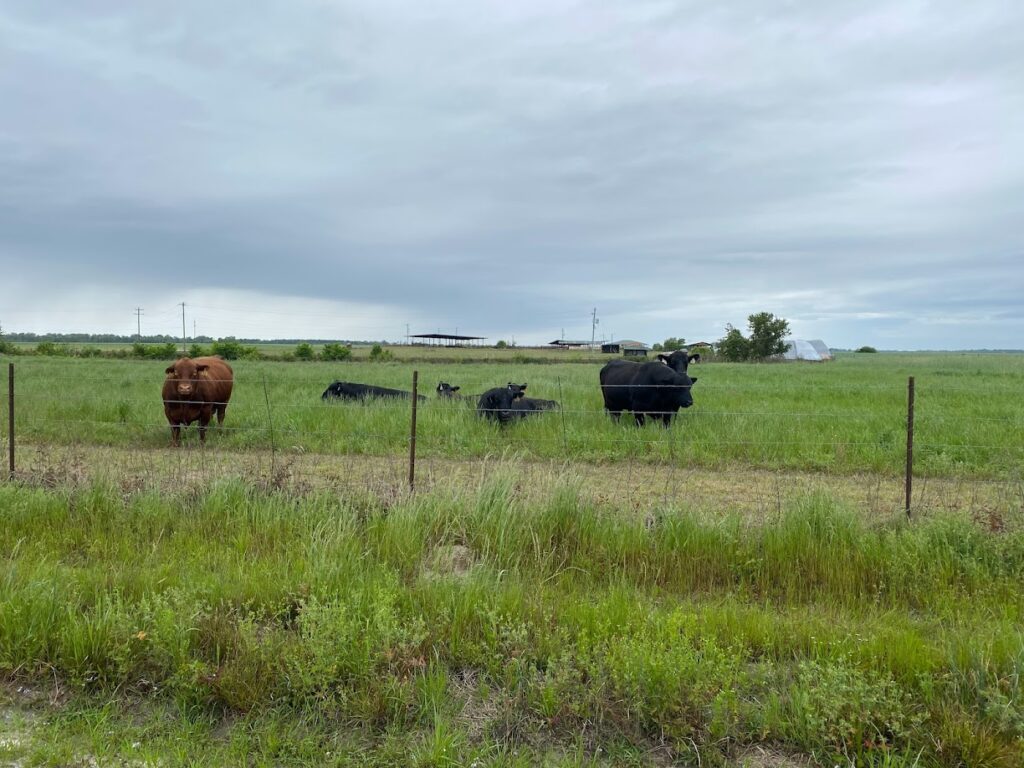Hillary P. Carnley, Area Livestock & Forages Agent
As the leaves begin to change and the temperatures cool, September signals more than just the arrival of autumn—it marks a crucial transition period for livestock producers. While warm-season pastures begin to fade and forage availability declines, hay or supplemental feed becomes necessary to maintain animal health and performance. However, with a strategic cool-season forage plan, producers can extend their grazing season, reduce feed costs, and improve soil and animal health. Now is the time to assess your land, plan your planting, and prepare your pastures for the months ahead. Soil health is the cornerstone of any successful forage system.
Before planting cool-season forages, starting with a soil test is essential. A soil test provides a snapshot of your pasture’s current nutrient status and pH, allowing for precise fertilizer and lime recommendations that improve productivity and efficiency. Failing to address soil pH or deficiencies can significantly reduce forage yield and quality. Soil sampling should be done annually or at least every 2–3 years, especially before establishing new pastures. Collecting and submitting soil samples is a quick and easy way to know about your soil’s nutrients and pH level. All you need is a soil probe or a spade, a clean plastic bucket, a zip-lock bag or a soil sample bag from your local extension office. Collect 10-15 soil cores from random areas of your pastures, avoiding areas like your fenceline, gates, and high traffic areas. Mix your core samples in the plastic bucket and then fill a sandwich-size bag with your sample or an extension provided soil bag that can be found at your local extension office. Clearly label your bag, so you can remember where the sample came from and what you plan on planting there. Take as many samples as you need and deliver them to your local extension office. Once your results come in, contact your local extension agent to help calculate the fertilizer and lime required for your pasture. Remember that it takes several months for lime to adjust the pH level of your soil. Therefore, if you plan to plant in September, you must submit your test in plenty of time for the lime to make a difference in your pH levels.

Several varieties of cool-season forages and mixes are available that you can plant to help extend your grazing period during the cooler months. You can plant one cool-season variety, such as ryegrass, or multiple varieties to extend the grazing period and restore nutrients to your soil. Planting period for your forages can depend on the variety and your location. Reach out to your local agent to see which variety would work best for your area.

Depending on your area and the recommended varieties, they need to be planted as early as late August and as late as late October. Cool-season grasses will continue to grow until late March to early April. If you are in an area that stays cooler for longer, there is potential for the grass to continue to grow into late April.
You should also consider legumes as a variety to plant with your cool-season grasses. Legumes not only help extend your grazing period, but also put nitrogen back in your soil that is available for other plants to use. It is also higher in protein, which can increase weight gain and improve body conditioning scores for your livestock. You can plant several different annual varieties, including clovers, vetch and winter pea. There are a few perennial varieties available to plant as well.

The soil type (sandy, loam, or clay) and area may dictate the success rate of your legumes. Reach out to your local extension agent to discuss which variety would work best for you and recommendations for planting a successful legume stand.
Another option to consider is brassicas as a cool-season forage. They are high in water and establish quickly during the cooler months. Brassicas help improve the soil by breaking up highly compacted areas. They also help suppress weeds and provide nutritional value to cattle. Varieties include radish, turnips, kale, and rapeseed.
There is also the option of mixing several varieties of cool-season forages. Combining one or two cool-season grasses with a legume and brassica can help improve soil quality, deter weed growth, lengthen grazing periods, and provide high-quality forage to your livestock.
It may seem like a lot of work preparing and planning for cool-season forages, but it is worth it in the long run. You can extend your grazing season by several months, resulting in less need for feed supplementation. Livestock can maintain body conditioning scores or gain weight if needed. Nutrients like nitrogen are added back to the soil for other plants to use, and high soil compacted areas can be broken apart, allowing for better soil nutrient flow to other plants.

Planning is needed to have a successful cool-season forage stand. It is vital to collect soil samples beforehand, so the lime can have time to change pH levels if required. You can choose from several different varieties, and by mixing them, you extend your grazing period. Other benefits include improving soil quality and nutritional value for livestock. If you are interested in planting cool-season forages, reach out to your local extension agent to learn about the best varieties in your area.
Clemson University Cooperative Extension Service offers its programs to people of all ages, regardless of race, color, religion, national origin, disability, political beliefs, sex, marital or family status, and is an equal opportunity employer.
